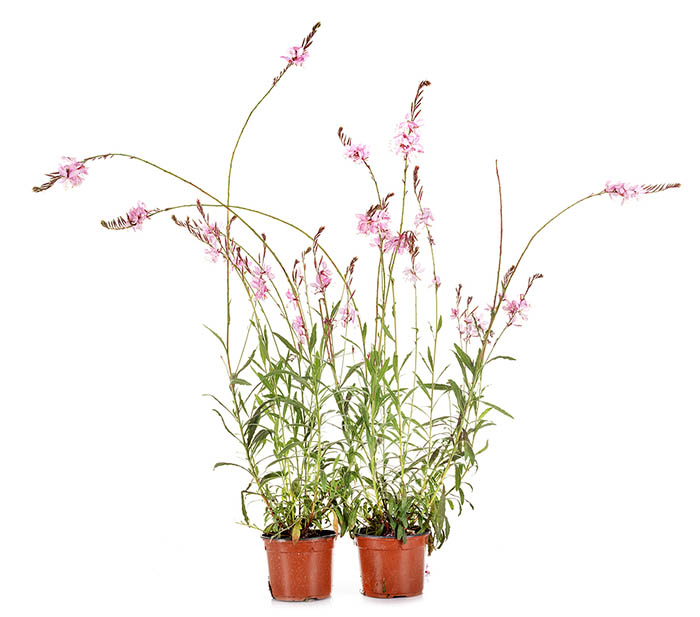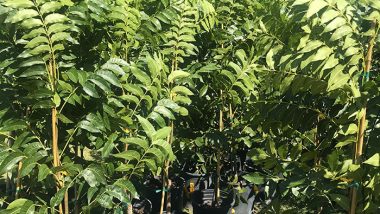Last updated on December 18th, 2024 at 06:18 pm
Gaura plant care for Southwest landscaping. Gauras (lindheimeri) are great perennial spiky plants that seem to bloom forever from about late spring until early fall. They are considered herbaceous perennial and depending on the variety they will grow from 2 ft. and up to 4 ft. tall and wide.
What Are Gaura Plants?
Gaura plants, scientifically called Gaura lindheimeri, are native to the southern United States and parts of Mexico. With their delicate white or pink flowers that resemble butterflies in flight, these plants can create a whimsical atmosphere in gardens and pots alike. And guess what? They’re not just pretty faces; they’re also hardy and adaptable, making them a great choice for both beginner and experienced gardeners.
Unique Features of Gaura Plants
What sets Gaura plants apart? For starters, they have a unique growth habit. Standing tall, reaching about 2 to 4 feet in height, they add a vertical element to garden beds. Their slender stems sway gently in the breeze, creating a lovely dance that captures attention. The lance-shaped leaves further enhance their beauty, adding a lush green backdrop to those lovely blooms.
The most common one is the whirling white Gaura. With dark green spiky stems and leaves, it is perfect for a garden that wants color during the mid-summer heat.
These plants thrive in poor soil and are considered drought-tolerant once they become established usually after the 3rd year. They do well in poor soil but look better with loamy soil.
What about fertilizing? They do not require lots of fertilizer but you can feed them for quicker growth and flowers with an all-purpose fertilizer, GrowMore’s fertilizer will work great. It’s best to cut them down just before winter sets in unless you live in places with no freezing temperatures. Mulch during winter to help protect the root system.
Types of Gaura
- Whirling white
- Pink Gaura
- Siskiyou pink
- Rainbow Gaura
- See more photos of these plants over at monrovia.com


Where to place Gaura
Plant them in full sun or partial shade but they will need at least 6 hrs. of full sunlight for good blossom and growth. You can also plant them in containers but your container must drain well. Plant two or more side by side for some fantastic color and landscape looks.
Problems with Gaura Plants
They are hardy plants that will do well in the desert southwest they are not prone to diseases or insects. One problem you might encounter is too much water. Yes, root rot is the biggest problem with Gaura plants keep your eye on your drip system and make sure your soil drains well.
Another common issue faced by gaura plants is powdery mildew. This fungal disease can cause a white or gray powdery coating on the leaves, eventually leading to their wilting and death. To combat this problem, it is essential to provide adequate air circulation around the plants. Avoid overcrowding by spacing them properly and ensuring that they are planted in an area with good airflow. Additionally, watering the plants at the base, rather than overhead, can prevent the spread of powdery mildew. If the disease persists, using a fungicide specifically formulated for powdery mildew can be an effective solution.
Root Rot on Guara Plants
From my own experience root rot occurs when the roots are constantly exposed to excess moisture, leading the roots to decay. To prevent root rot, it is crucial to ensure that the soil is well-drained. Adding organic matter such as compost or peat moss can improve soil drainage. Furthermore, avoid overwatering the plants and allow the top layer of soil to dry out before watering again. If root rot has already set in, carefully remove the affected parts of the plant and replant it in fresh, well-drained soil.
In conclusion, while gaura plants may face some challenges, there are simple solutions to overcome them. By providing proper air circulation and preventing powdery mildew, your gauras will remain vibrant and healthy. Similarly, ensuring well-drained soil and avoiding overwatering can help prevent root rot. So don’t let these problems discourage you! With a little care and attention, your gaura plants will continue to look good throughout the growing seasons. Happy gardening!
More Colorful Plants for the Southwest at Buy Lantana Plants.
Gaura Plant Care
USDA zones are from 5-10.
Do you have questions about the “Gaura Plant Care” post? Please comment below.

Greenhouse Manager, Master Gardener, and Webmaster.
If you have any questions or enjoyed this post, feel free to share your thoughts in the comments below.




